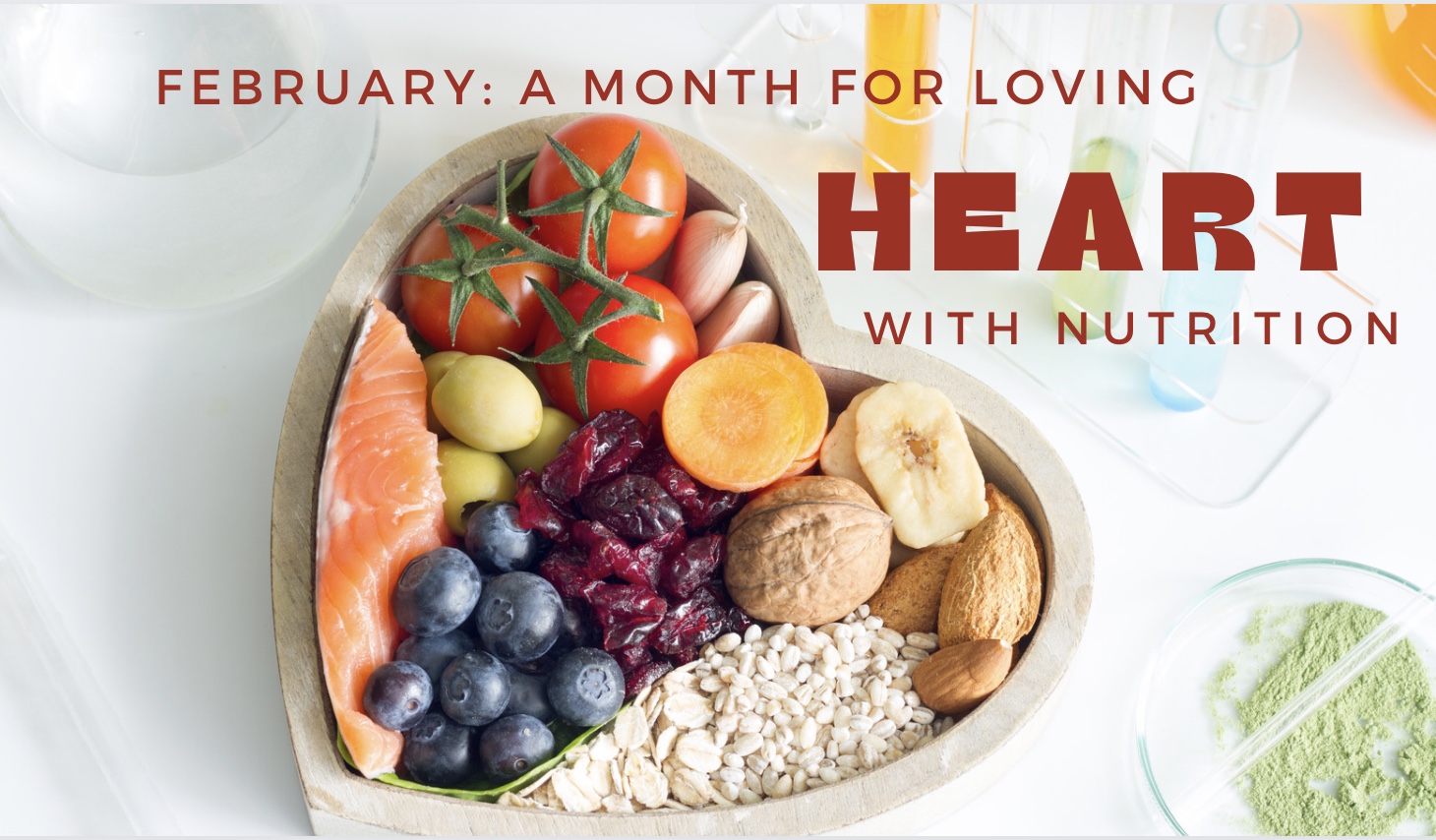February isn’t just about Valentine’s Day; it’s also American Heart Health Month. While chocolates and roses often steal with spotlight this month, let’s not forget about nurturing the most vital organ in our bodies- our heart. This February let’s dive into the world of nutrition and learn how we can show our hearts some extra love throughout food choices.
Unlocking Heart Health
American Heart Health Month aka February is a time dedicated to raising awareness about heart health and preventing heart disease. One of the most effective ways to promote heart health is through our diets. A heart-healthy diet can help manage cholesterol levels, regulate blood pressure, and reduce the risk of cardiovascular disease. Let’s explore the nutritional wonders that make our hearts sing!
Understanding Cholesterol
Cholesterol often gets a bad rap, but not all cholesterol is created equal. There’s “good” cholesterol (HDL) and “bad” cholesterol (LDL). High levels of LDL cholesterol can clog arteries and increase the risk of heart disease, while HDL cholesterol helps remove LDL from the bloodstream, reducing the risk. To keep our hearts happy, we should aim to lower LDL cholesterol levels and raise HDL levels. How might you ask? With soluble fiber which acts like a sponge in the digestive system, binding to LDL cholesterol and removing it from the body which then lowers your LDL cholesterol levels. Additionally, soluble fiber promotes the liver’s production of HDL cholesterol, the “good” cholesterol, which helps transport excess cholesterol out of the bloodstream, leading to higher HDL levels. It does this by incorporating foods rich in soluble fiber like oats, beans, and lentils. With these food choices you can effectively manage your cholesterol levels and support your heart health.
Managing Blood Pressure
High blood pressure, or hypertension, is a significant risk factor for heart disease. Blood pressure is a crucial measure of heart health, indicating the force of blood against artery walls as the heart pumps blood throughout the body. It is recorded as two numbers: systolic (top) and diastolic (bottom), with a normal reading around 120/80 mmHg. The systolic pressure (the top number) represents artery pressure when the heart contracts, while the diastolic (the bottom number) reflects artery pressure between heartbeats when the heart relaxes and fills with blood. High blood pressure, if left unmanaged, can lead to serious health consequences such as heart disease, stroke, kidney damage, and other cardiovascular complications. Therefore, maintaining healthy blood pressure levels through lifestyle modifications like dietary changes like reducing the amount of salt in our diets, is important to reduce the risk of these adverse outcomes.
Balancing Sodium Intake
Salt is a compound made up of sodium chloride. Sodium is the component of salt that can affect health, as excessive sodium intake is linked to high blood pressure and heart disease. While sodium is essential for bodily functions, excess intake can lead to health issues. The American Heart Association recommends consuming no more than 2,300 milligrams of sodium per day, with an ideal limit of 1,500 milligrams for most adults. Reading food labels and choosing low-sodium options can help manage sodium intake and promote heart health. Be mindful of hidden sources of sodium in packaged foods like canned soups, sauces, and condiments. Opt for low-sodium or no-salt added varieties whenever possible.
This February let’s commit to nurturing our hearts through the power of nutrition. By making simple yet impactful changes to our diets, we can improve our heart health and overall well-being. Remember, small steps can lead to significant results when it comes to our health. If you’re looking for personalized guidance on creating a heart-healthy eating plan, let’s chat! Schedule a meeting with me, your nutrition partner, for personalized guidance and strategies to make the most of loving our hearts! Let’s embark on this journey to a healthier heart together!
